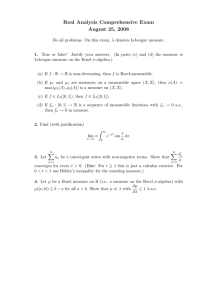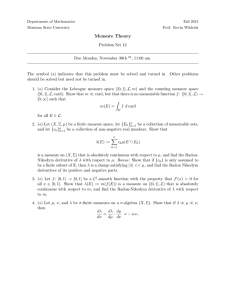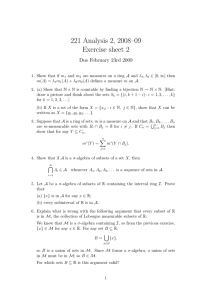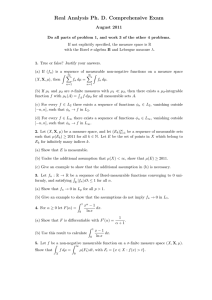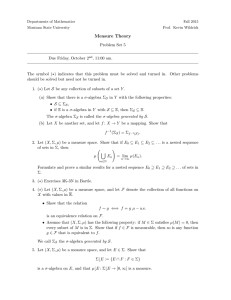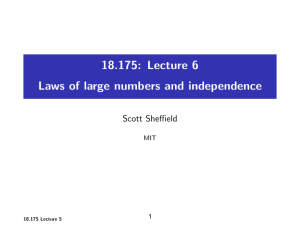Integration Chapter 4
advertisement
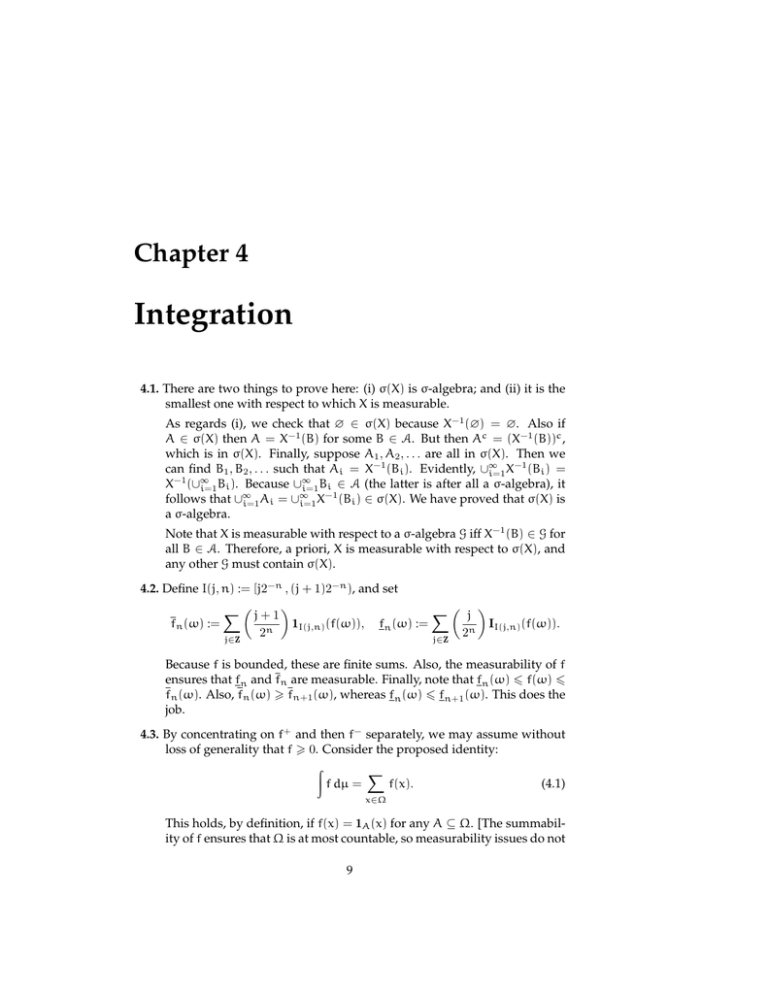
Chapter 4 Integration 4.1. There are two things to prove here: (i) σ(X) is σ-algebra; and (ii) it is the smallest one with respect to which X is measurable. As regards (i), we check that ∅ ∈ σ(X) because X−1 (∅) = ∅. Also if A ∈ σ(X) then A = X−1 (B) for some B ∈ A. But then Ac = (X−1 (B))c , which is in σ(X). Finally, suppose A1 , A2 , . . . are all in σ(X). Then we −1 can find B1 , B2 , . . . such that Ai = X−1 (Bi ). Evidently, ∪∞ (Bi ) = i=1 X −1 ∞ ∞ X (∪i=1 Bi ). Because ∪i=1 Bi ∈ A (the latter is after all a σ-algebra), it ∞ −1 follows that ∪∞ (Bi ) ∈ σ(X). We have proved that σ(X) is i=1 Ai = ∪i=1 X a σ-algebra. Note that X is measurable with respect to a σ-algebra G iff X−1 (B) ∈ G for all B ∈ A. Therefore, a priori, X is measurable with respect to σ(X), and any other G must contain σ(X). 4.2. Define I(j, n) := [j2−n , (j + 1)2−n ), and set � �j + 1� �� j � fn (ω) := 1I(j,n) (f(ω)), fn (ω) := II(j,n) (f(ω)). 2n 2n j∈Z j∈Z Because f is bounded, these are finite sums. Also, the measurability of f ensures that fn and fn are measurable. Finally, note that fn (ω) � f(ω) � fn (ω). Also, fn (ω) � fn+1 (ω), whereas fn (ω) � fn+1 (ω). This does the job. 4.3. By concentrating on f+ and then f− separately, we may assume without loss of generality that f � 0. Consider the proposed identity: � � f dµ = f(x). (4.1) x∈Ω This holds, by definition, if f(x) = 1A (x) for any A ⊆ Ω. [The summability of f ensures that Ω is at most countable, so measurability issues do not 9 10 CHAPTER 4. INTEGRATION arise.] Therefore, (4.1) is valid for all elementary functions f. Choose a sequence of elementary functions fn converging up to f pointwise. Eq. (4.1) then follows from the monotone convergence theorem. 4.4. If A1 , A2 , . . . are disjoint and measurable then so are f−1 (A1 ), f−1 (A2 ), . . ., ∞ −1 and f−1 (∪∞ (An ). The rest is easy sailing. n=1 An ) = ∪n=1 f
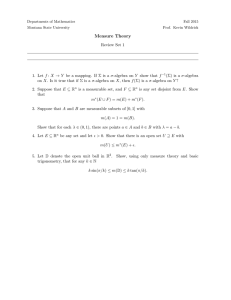
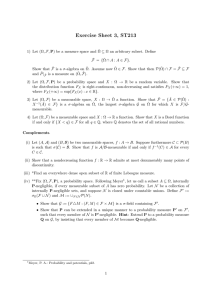
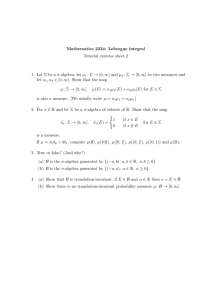
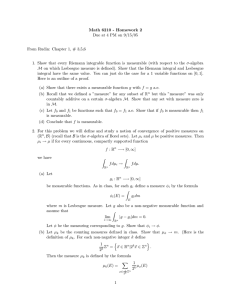
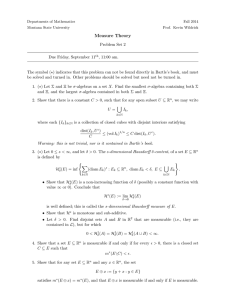
![MA2224 (Lebesgue integral) Tutorial sheet 5 [February 19, 2016] Name: Solutions](http://s2.studylib.net/store/data/010730672_1-a892ada8d0a07e1c5cf78400ac6d42a7-300x300.png)
